How To Remove Creeping Juniper Ground Cover
My garden looked beautiful in the spring a few years agone, but something was missing. I had gorgeous flowers and shrubs, only the infinite in between them seemed a trivial bland. That'southward when I decided to add together an evergreen ground comprehend and the garden came to life!
A ground embrace is a low growing plant that creeps along the basis in a spreading design. It's often planted amongst taller plants and provides cover or a decorative office.
I prefer evergreen groundcover so that when the flowers die off, there'due south a pretty blanket of light and dark green left backside. Some evergreen footing covers flower and some don't, but they all add together texture to the garden.
There are also practical reasons for using ground cover in add-on to the aesthetics and natural dazzler they provide. It'due south oft drought-friendly and maintenance-free. Information technology helps suppress weeds and retain wet in the soil, as well.
Ground cover plants can also be used where y'all take a gradient that is hard to mow or maintain, and can assist prevent erosion. You can also use basis covers in shady areas where grass or other plants will struggle since some ground covers thrive in shade.
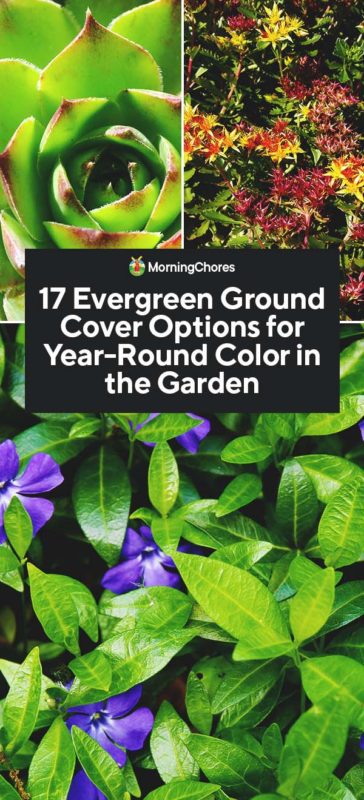
Footing Cover Types
Ground covers come in a few growing types. One variety of institute can take different types of growth.
Clumpers
Clumpers spread and increase in size each spring. They do this by extending their reach above the ground. You by and large don't need to divide clumpers, because they spread evenly on their own.
Creepers
Creepers spread via underground stems or creep forth the basis, rooting into the surface as they abound. You'll need to dissever creepers if they start to grow outside of their surface area. I prefer creepers if I'm landscaping a large space or sloped areas.
17 Varieties of Evergreen Ground Embrace
There are many varieties of evergreen ground cover to choose from, but these my all-time favorites.
1. Sedum (Sedum)
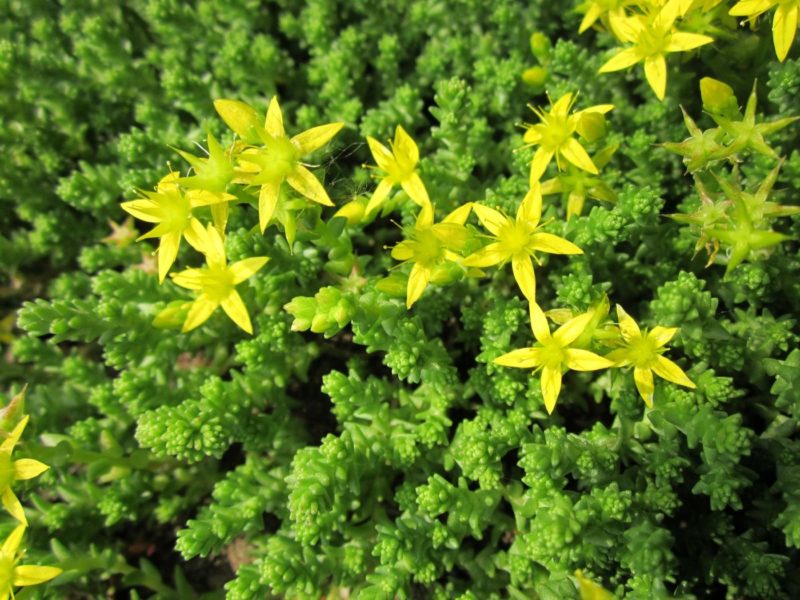
Sedum is, past far, my favorite and well-nigh used ground cover establish. Information technology's an ornamental succulent that thrives in full sun. Information technology needs well-draining soil. The leaves are deep green, and it has bright yellow flowers. I've used sedum in level gardens, just it works well in terraced gardens where you want it to grow down a wall. Sedum roots itself wherever information technology touches the basis. There is south sedum suitable for almost zones.
2. Globe Ice Establish (Ruschia punctulata)
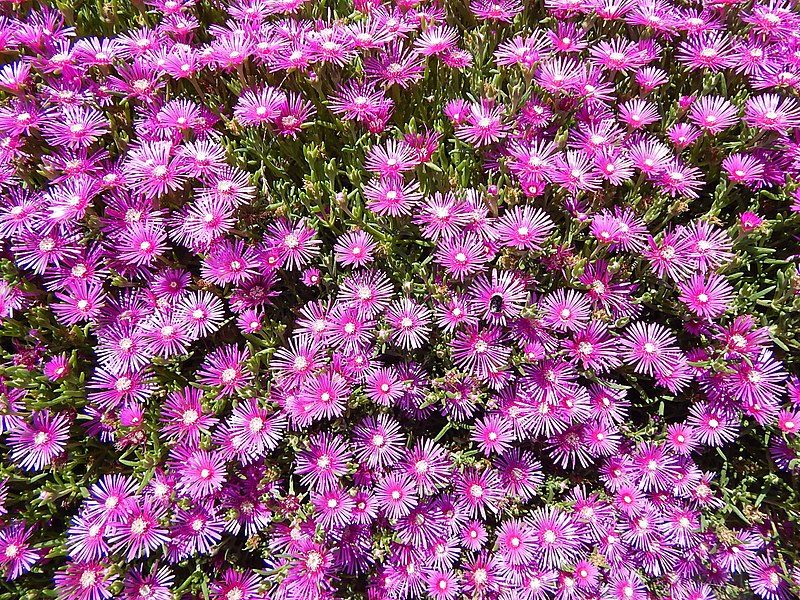
Globe Ice Plant is cold tolerant and is all-time for cooler areas. Information technology has cute purple flowers and deep evergreen leaves. It grows tightly and is skilful for those wanting a formal look. Globe water ice plant suits drier areas with niggling humidity.
iii. Hens and Chicks (Sempervivum tectorum)
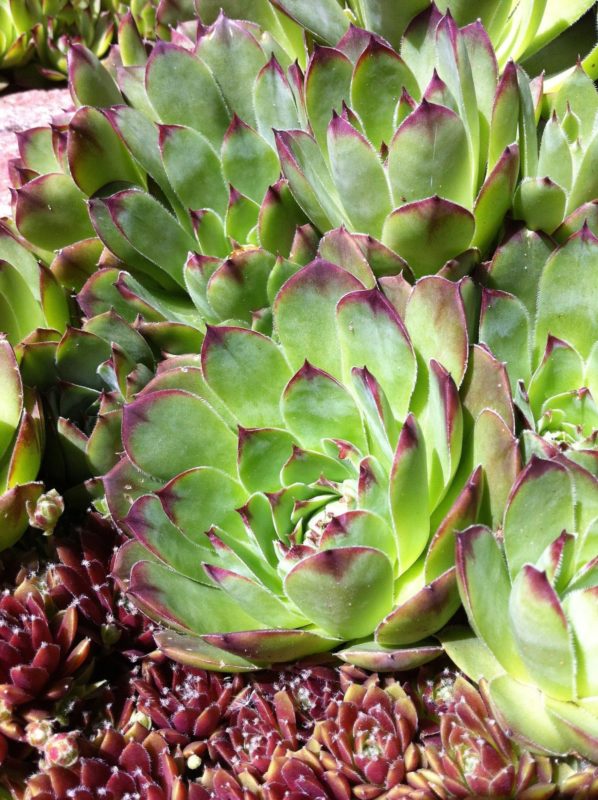
Some people think this found is a lilliputian old fashioned, only information technology suits many gardens., especially xeriscaping. Hens and chicks looks proficient in tight spaces like in between paving stones. I beloved it every bit a ground cover considering information technology creates a unique texture in the garden.
4. Creeping Phlox (Phlox stolonifera)
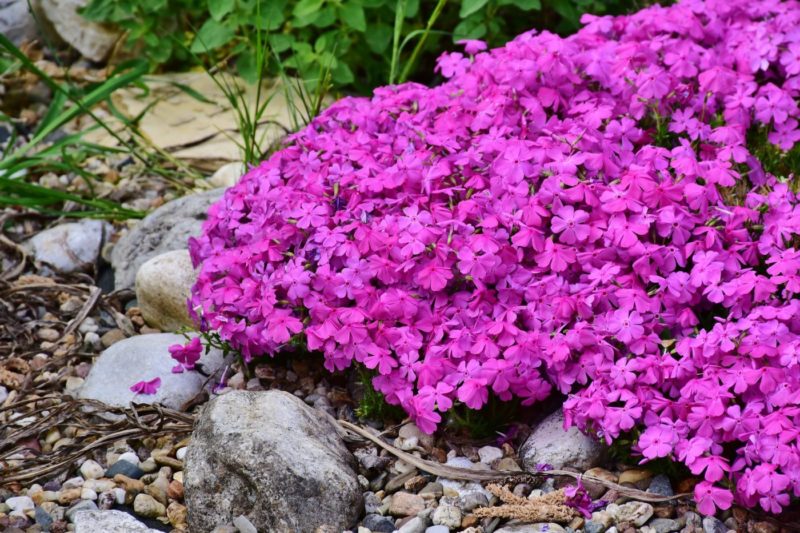
Phlox is a total sunday evergreen ground embrace. It will tolerate dry soil, simply prefers lots of wet. Information technology grows well in zones 3-ix. Phlox spreads fast, so it's perfect on a blank slope. If y'all utilise this in your garden, yous can split the extra growth and replant.
five. Candytuft (Iberis sempervirens)
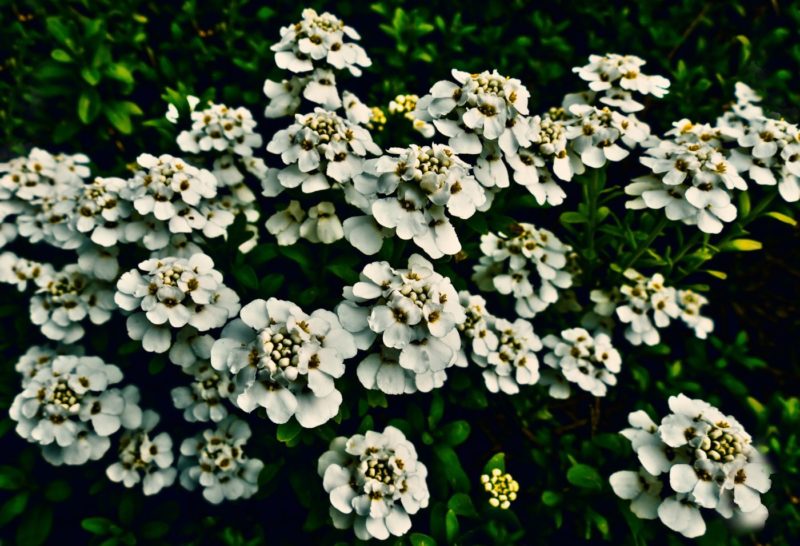
Candytuft handles drought and grows well in zones 3-eight. It's evergreen in the south and semi-evergreen in the n.
6. Japanese Spurge (Pachysandra terminalis)
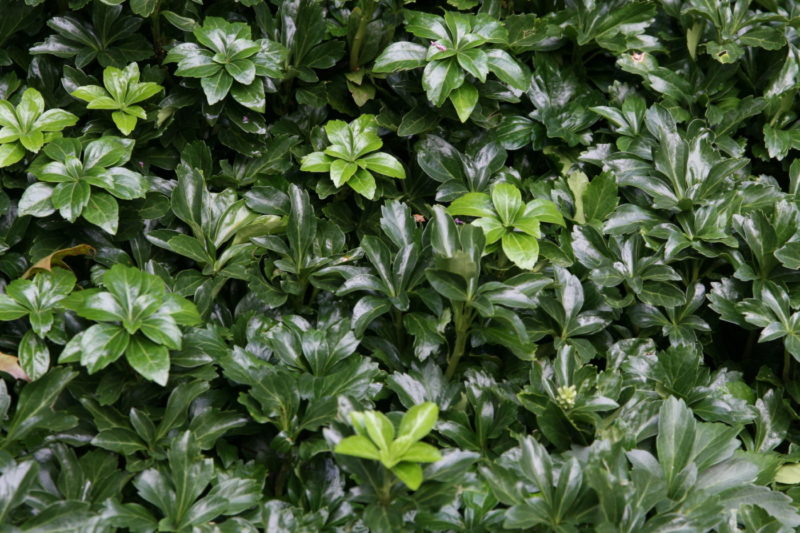
A beautiful broad-leafed evergreen that suits zones iv-viii. This basis encompass doesn't flower, simply the shiny green foliage grows thick and vivid.
7. Creeping Myrtle (Vinca small)
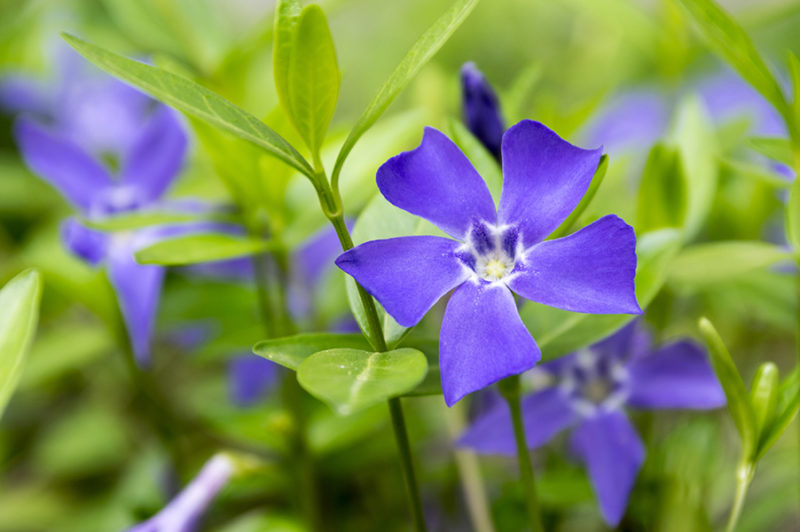
This institute has glossy green leaves and spreads rapidly. In the leap, it has lovely star-shaped, violet flowers. It volition accept root wherever the stems touch the ground, and so it's piece of cake to propagate. It can handle dry to moist soil and full sun to deep shade.
viii. Creeping Thyme (Thymus serpyllum)
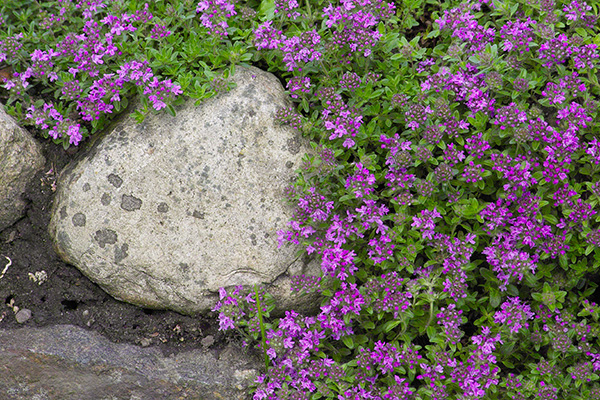
Creeping thyme is a low-growing, hardy perennial that needs little maintenance to thrive. You can eat the leaves and flowers as yous can with other thyme varieties. It's deer resistant and attracts pollinators. It does well in a variety of soils and lite conditions.
nine. Angelina Stonecrop (Sedum rupestre 'Angelina')
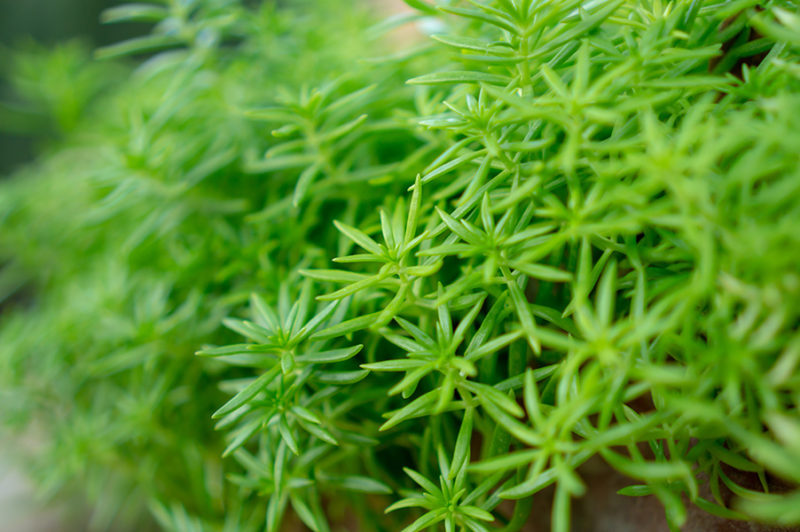
This pretty plant has xanthous needle-like foilage and spreads speedily. In the winter, the leaves plough orange. Proficient in zones 3-11 and can handle drought.
ten. Wall Germander (Teucrium chamaedrys)
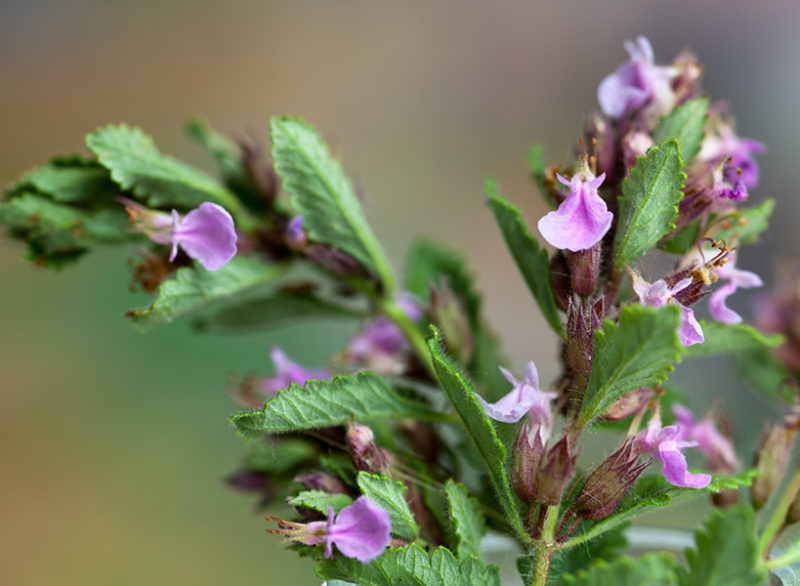
Wall germander is a medicinal and culinary herb that features pretty, evergreen foliage. Information technology gets about a foot tall and will spread much further than that. It'due south drought-tolerant and deer-resistant. It tin fifty-fifty handle a trivial bit of common salt in the soil, so information technology's perfect for people who go out nigh the body of water. Good in zones 5-9, full to part sun, and a variety of soils.
11. Blue Star Juniper (Juniperus squamata)
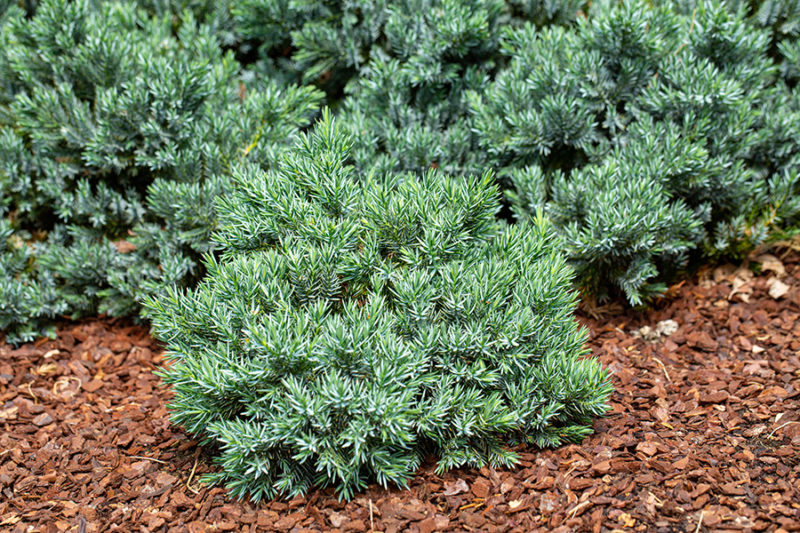
This plant got its name thanks to its star-similar cluster of needles. It'south a member of the cypress family that grows about a human foot alpine and 3-feet wide. It prefers full sun, sandy soil, and grows in zones iv-eight.
12. Lenten Rose (Helleborus x hybridus)
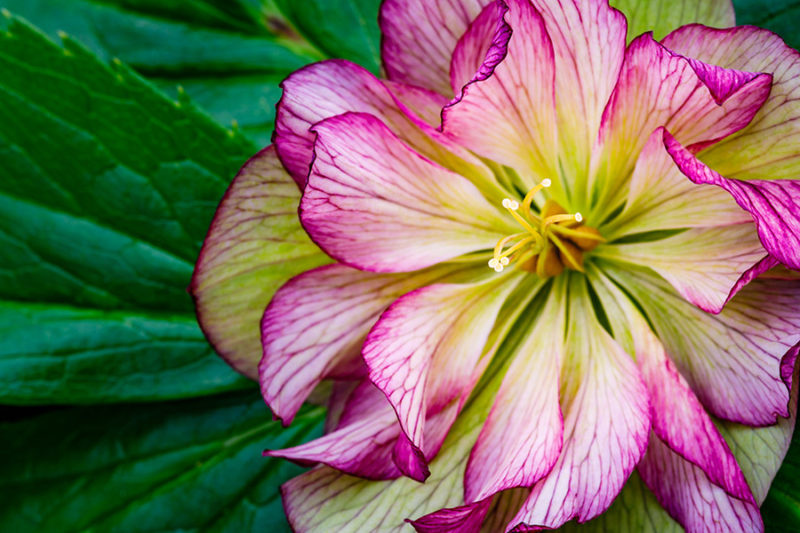
Lenten rose isn't a rose at all, merely rather office of the buttercup family. It blooms in the early jump (effectually Lent, which is where it gets its name) for 8-ten weeks. Lenten rose needs office to full shade, and rich, moist soil. It grows in zones 4-9.
thirteen. Mazus (Mazus reptans)
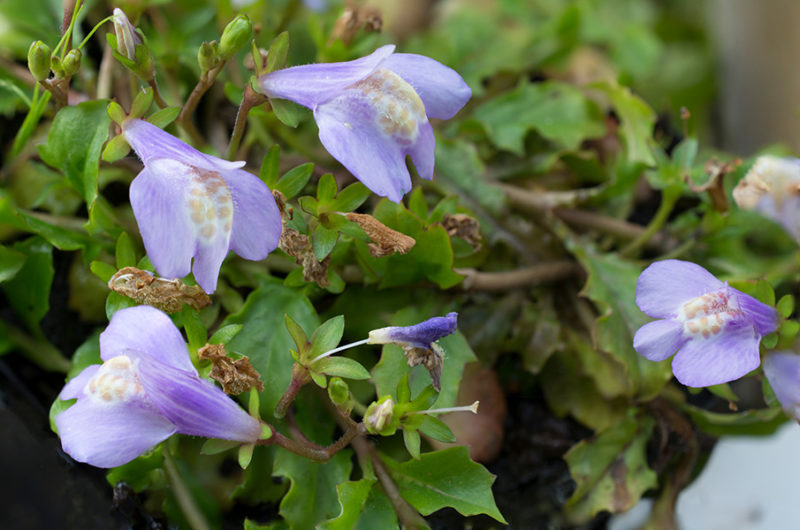
Mazus is a fast grower that doesn't become invasive, so it's perfect if you need something to quickly fill a space. It's perfect in rock gardens or between pavers. Mazus prefers role shade and loamy soil. It grows in zones 5-8.
xiv. Spotted Dead Nettle (Lamium maculatum)
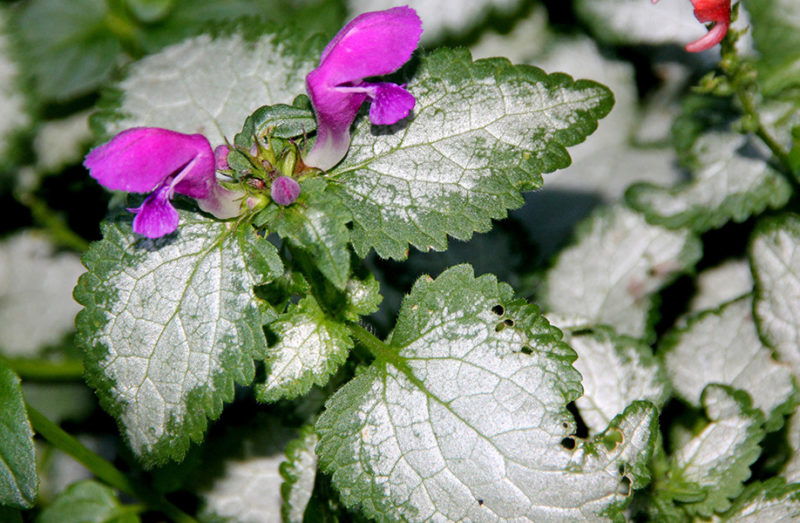
These shade-lovers will add together colour to a dark corner of the garden all yr round. They grow 3-12 inches alpine and upwards to 3-feet wide. The attractive variegated foliage comes in a diverseness of shades. Grows in zones 4-8.
15. Euonymus (Euonymus)
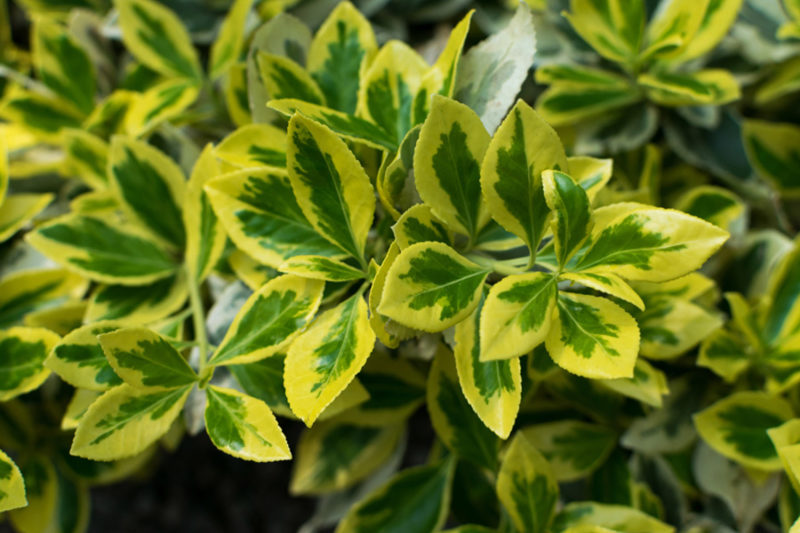
This evergreen found will give you lots of fall color. It comes in a diverseness of different colors, sizes and growth habits, so make sure you're selecting a ground comprehend and not a shrub when planting. It can grow in full sunday to heavy shade and tin handle any well-draining soil.
16. English Ivy (Hedera helix)
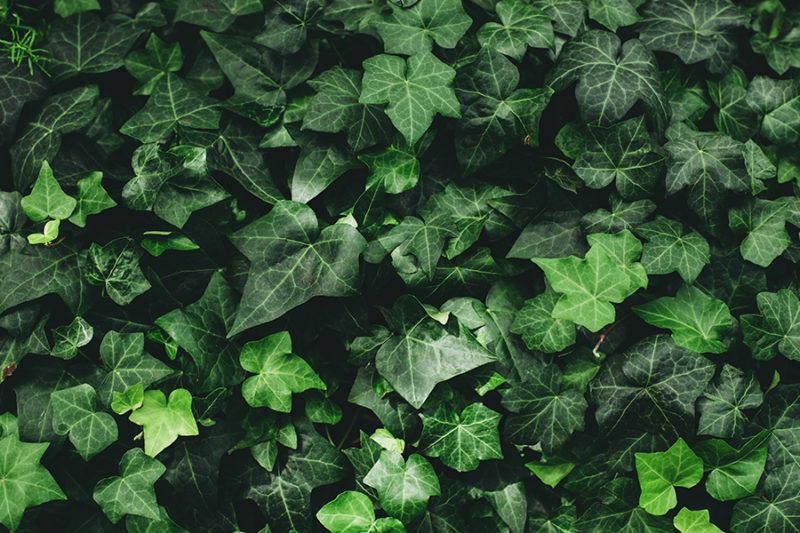
Ivy is a beautiful, sleeky evergreen that spreads chop-chop – maybe as well fast. Information technology can rapidly become invasive in some areas, and then brand certain yous tin keep it under control before planting it in your thousand. Prefers office to total shade with fertile, moist soil. That said, it's hardy and can grow in total sun and dry out, depleted soil. Hardy in zones 4-9.
17. Bugleweed (Ajuga)
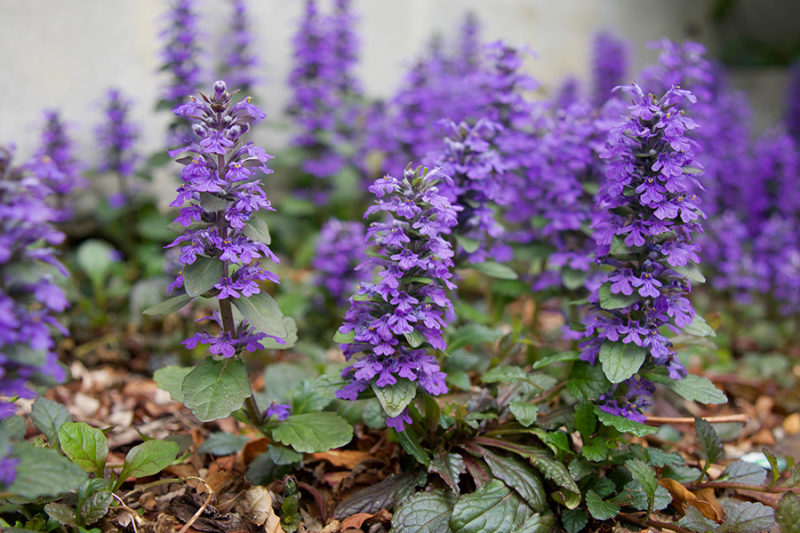
Bugleweed is besides known as ajuga. It spreads low and compact forth the ground. It is another establish that can go invasive, so exist cautious where you constitute information technology. Prefers total to role shade and moist, well-tuckered soil. Grows in zones three-10.
Growing Evergreen Ground Cover
Once you pick your ground comprehend, here's how to get information technology in the ground.
Preparing the Ground
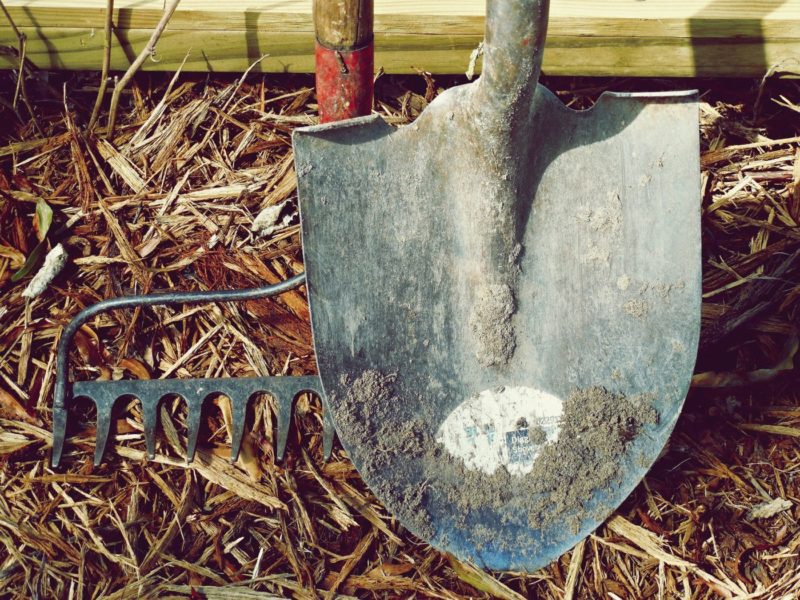
Remove all weeds and any growth yous don't want competing with your new ground cover. Add together a six-inch layer of well-rotted organic matter and dig it in.
How Many Plants do You Need?
Once you've decided on the type of encompass you want and the specific plant, you need to consider how many to buy.
Mensurate the area and cantankerous-reference this with the fully grown size of the found. Work out how many total-siz e plants yous need to make full this infinite.
Spacing
Space plants closely to cover an area quickly. Creepers can exist placed shut or far apart because eventually, they will join. It all depends on whether you are happy to expect a few seasons or if y'all want the ground covered quickly.
Clumpers demand to be planted with their mature size in heed. If the establish is xv inches when mature, plant the centre of each plant 12 to 15 inches autonomously from each other.
Caring for Ground Embrace
Once the plants are in the ground, y'all should ensure that weeds don't plant themselves in amongst the ground cover. Exist vigilant with this because if you've chosen a tight clumping ground encompass, the weeds are protected by the tightness and almost impossible to remove completely.
Add a layer of well-rotted organic matter and mulch to suppress weeds.
Feed your new ground cover consistently for the first few months to get it established. Use liquid fertilizer and remove all weeds as they appear.
A Few More Tips
- Inquire earlier you buy a ground cover listed as 'rapid growing.' These types are often ambitious growers and may end upwardly beingness an overgrown nightmare.
- Don't recall almost ground cover as a filler. You can too make it the highlight.
- If you intend to use evergreen ground comprehend in an expanse where you walk, ensure you buy i hardy enough for this purpose.
- Soil preferences and sun requirements are but as of import to evergreen ground covers as whatsoever other plant, and so cull to suit your garden.
Evergreen ground cover can change the wait of your garden for the better and requite you color even when everything else is dormant. It can assist prevent erosion and fill in shady areas. Let united states of america know what your favorite type is.
Was this article helpful?
Yeah No
Source: https://morningchores.com/evergreen-ground-cover/

0 Response to "How To Remove Creeping Juniper Ground Cover"
Post a Comment